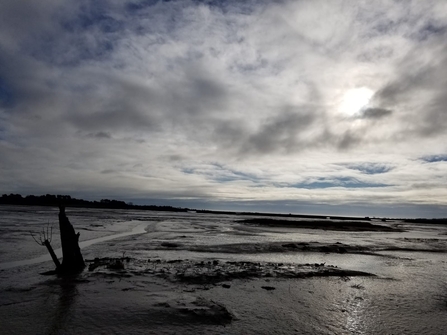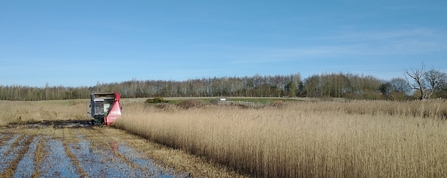Weekly wild news from our reserves - 11 February 2022
Tree safety work at Reydon Wood - Dan Doughty
Our Warden, JJ, was excited to obtain this trail cam footage from Sizewell Belts. It shows a little egret hunting whilst performing its distinctive foot shaking to root out prey from their hiding places.
The little egret is a small, white heron that feeds on small fish and crustaceans. Once a very rare visitor to the UK, little egrets are now a common sight around the coasts of southern England and Wales as they expand their range, possibly due to increasing temperatures caused by climate change.
Snape scrapes
The South Suffolk team created five new scrapes at Snape Marshes this week. The new habitats will benefit wintering wildfowl and waders, support breeding waders and encourage new colonies of wetland plants and stoneworts. This work is being funded by the Landscape Enhancement Initiative from the National Grid.
Spring pioneers
These uplifting first signs of spring are emerging in Bradfield Woods, with new shoots of elder appearing and bluebell and primrose leaves poking through the woodland floor. A gorgeous scarlet elf cup fungus was also spotted.
Volunteer bonfires
Our trusty volunteer teams have been helping clear scrub from dyke edges on Peto’s Marsh, Carlton, and removing gorse to maintain heathland at Blackheath Common near Church Farm. Bonfires are an efficient and rewarding way to clear away the excess brash.
Tree safety work
This week the North Suffolk team removed a potentially hazardous branch overhanging the path at Reydon Wood.
Preparations for habitat management
Andy and the team at Lound Lakes untangled a fence and cleared bracken which had encroached onto a previously grazed area. They also raised the tree canopy slightly to allow improve access for future management before the bird breeding season begins.
What a vista!
Warden Gabby was rewarded for her early start with this lovely sky at Hazlewood Marshes.

Hazlewood Marshes – Gabby King
Softrak does the rounds
The Softrak has certainly been well used recently! This week it was Hen Reedbeds turn for fen structure management. This work maintains a mosaic of structure within the reedbed which benefits a variety of species such as water rail, bittern, warbler and bearded tit.

Softrak work at Hen Reedbeds - Dan Doughty













